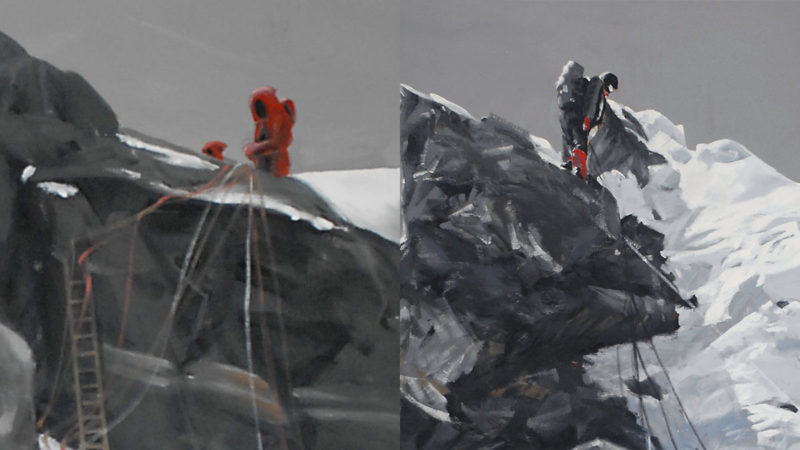This post is also available in: German
What is the Hillary Step? Not a hilarious step, but one of the greatest obstacles while climbing Mount Everest from the south.
The legendary Edmund Hillary and Sherpa Norgay Tenzing mastered this about 40-feet or twelve-meter high barrier while they were climbing Mount Everest as part of the ninth British expedition to Everest in 1953. But it was not easy for them to climb the step only 300 feet below the summit at an altitude of 29,029 feet.
It was, Hillary later wrote,
a formidable looking problem …We realized that at this altitude it might well spell the difference between success and failure.
Employing the skills he had learned in the New Zealand Alps, Hillary jammed his feet, hands and shoulders into a thin crack between a ridge of ice and the rock and, as he put it, “levered myself” up the wall. Then he brought Tenzing up on a tight rope.
Congestion at Hillary Step
Not all climbers have the skills to master this step easily. The Hillary Step could be labeled “queue here to conquer Everest”. Many pictures show dozens of climbers try to pass the step on fixed ropes which are renewed each year. After the Khumbu icefall and the Lhotse face the Hillary Step represents the most dangerous situation while climbing the normal route over the Southeast ridge of Mt. Everest.
Frequently people die here or nearyby, such as Rob Hall 1996.
Two factors lead to this congestion: The altitude and the narrowness. Far over 8.000 meters, climbers have already been a while in the so-called death zone when they reach the climbing spot. Every step counts, every breath of air hurts. Only one climber can master the ledge at a time. It is impossible to overtake a slow climber and it is like a one-way street: Either climb up or climb down. The traffic jam this causes is live threatening because the cold and the limited oxygen supply require that the time spent there is kept to a minimum.
A couple of alternatives have been discussed recently. A stepladder could make it easier to climb Hillary Step, but many climbers oppose this idea. There is a ladder installed at the Second Step on the other side of the mountain, but somehow people do not think more ladders are a good idea. An alternative route downward, also secured with a rope could help to dissolve the traffic jam there.
Second step vs. Hillary step
The Second-Step is a similar difficulty on the other side of the mountain. A comparison:
Second-Step
Hillary-Step
Northeast ridge
Potentially climbed first by George Leigh Mallory
780 feet (238 meters) below the summit at an altitude of 28,250 feet (8610 meters)
Difficult, UIAA V+, and 130 feet (40 meters) high
Ladder and fixed ropes help
Southeast ridge
Edmund Hillary, Sherpa Norgay Tenzing
300 feet (91,5 meters) below the summit at an altitude of 28729 feet (8756,5 meters)
Medium difficulty, UIAA I-II, and 40 feet (12 meters) high
Fixed ropes help
This painting is part of the set Landmarks of Everest – routes on the mountain shown as paintings. Click here for more!
